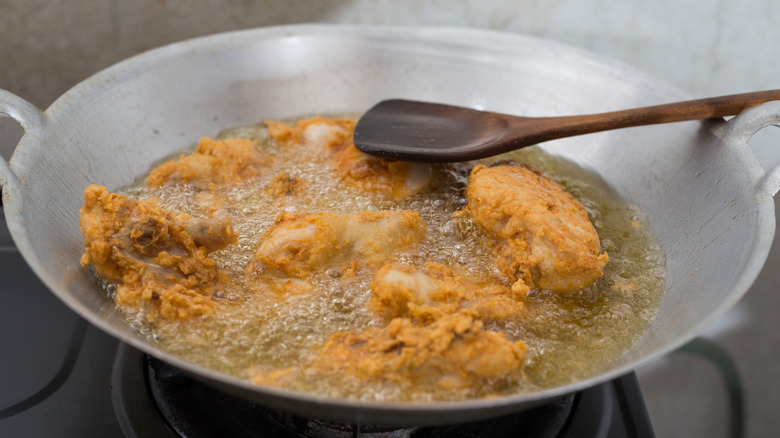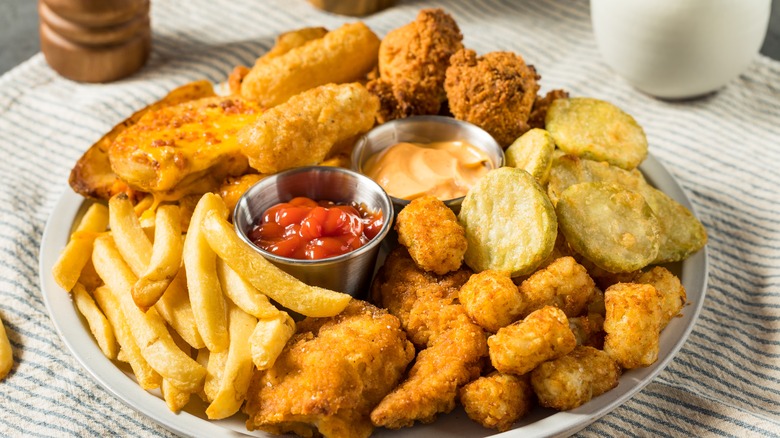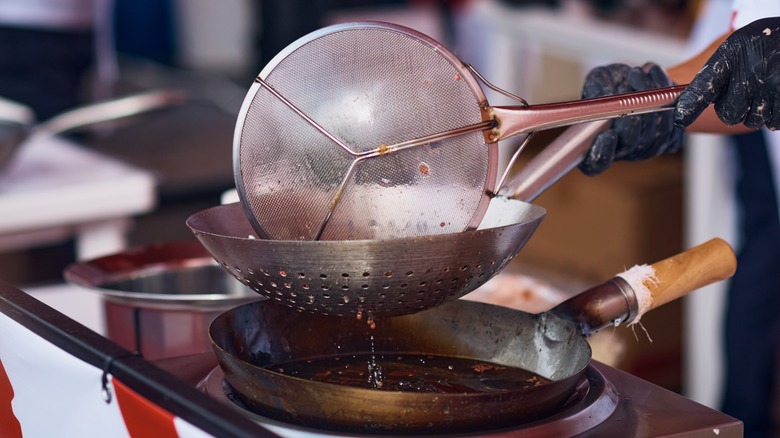Avoid A Soggy Mess By Never Doubling Fried Food Recipes
There are times when it is prudent to double (or even triple) a recipe. Parties come to mind, as does batch cooking, or just making extra because you know the dish will be a hit, like these deep-fried dishes you should try before you die. However, you should never blindly double your fried food recipes, lest you create a soggy mess.
The items will become soggy for two main reasons, the first being inefficient temperature control. Adding double the amount of food to fry will cause the temperature of the oil to drop too much, resulting in uneven cooking and greasy food, instead of perfectly cooked interiors and crisp exteriors. It's important to not overcrowd the pan.
Another reason for sogginess is that even if you are doubling the recipe and cooking it in batches, the first batch will sit out for far too long while waiting for the later batches to get their time in the oil. As they sit out at room temperature, they lose their crispiness, especially when piled together on a plate.
Keeping fried food as crispy as possible
For those times you really must scale up a fried food recipe, there are some things you can do to keep the food as crispy as possible. When cooking a double recipe in smaller batches at a party, simply plate up the hot food as it comes out of the fryer, and let your guests serve themselves. This also conveniently takes into account the inevitable staggered arrival times of guests; no matter when someone arrives, they will still get hot, fresh food.
If you don't want to spend most of the night in the kitchen, another way to deal with a large amount of fried food is by keeping it in a warm oven. This way you can prepare the food a little ahead of time, and fill up platters throughout the night with the warm, crispy food. This allows more time for socializing with your guests.
Reuse the oil by straining it
The best oils for deep frying can be reused more times than you might think, depending on the type of oil chosen. Just pay close attention to the oil, inspecting it before use for any visual or olfactory changes. Use an instant-read thermometer to quickly ascertain when the oil has come to the right temperature for frying, often around 350 degrees Fahrenheit, or as your recipe indicates. If your oil becomes too hot, there is a simple hack to fix it: Just add more oil. If your oil begins to smoke before it is hot enough for frying, chances are there is too much debris, which will give subsequent batches burnt flavors and smells. If you have strained it and the oil is still dark, change out the oil for a fresh batch.
The utensils you use while frying are also important, so make sure to prepare all the equipment you need before even turning on the flame. A sturdy spider skimmer, mesh strainer, or a slotted spoon is great for lifting out the fried food; and a wire rack placed on a sheet tray is ideal for the fried food to rest without getting soggy.


